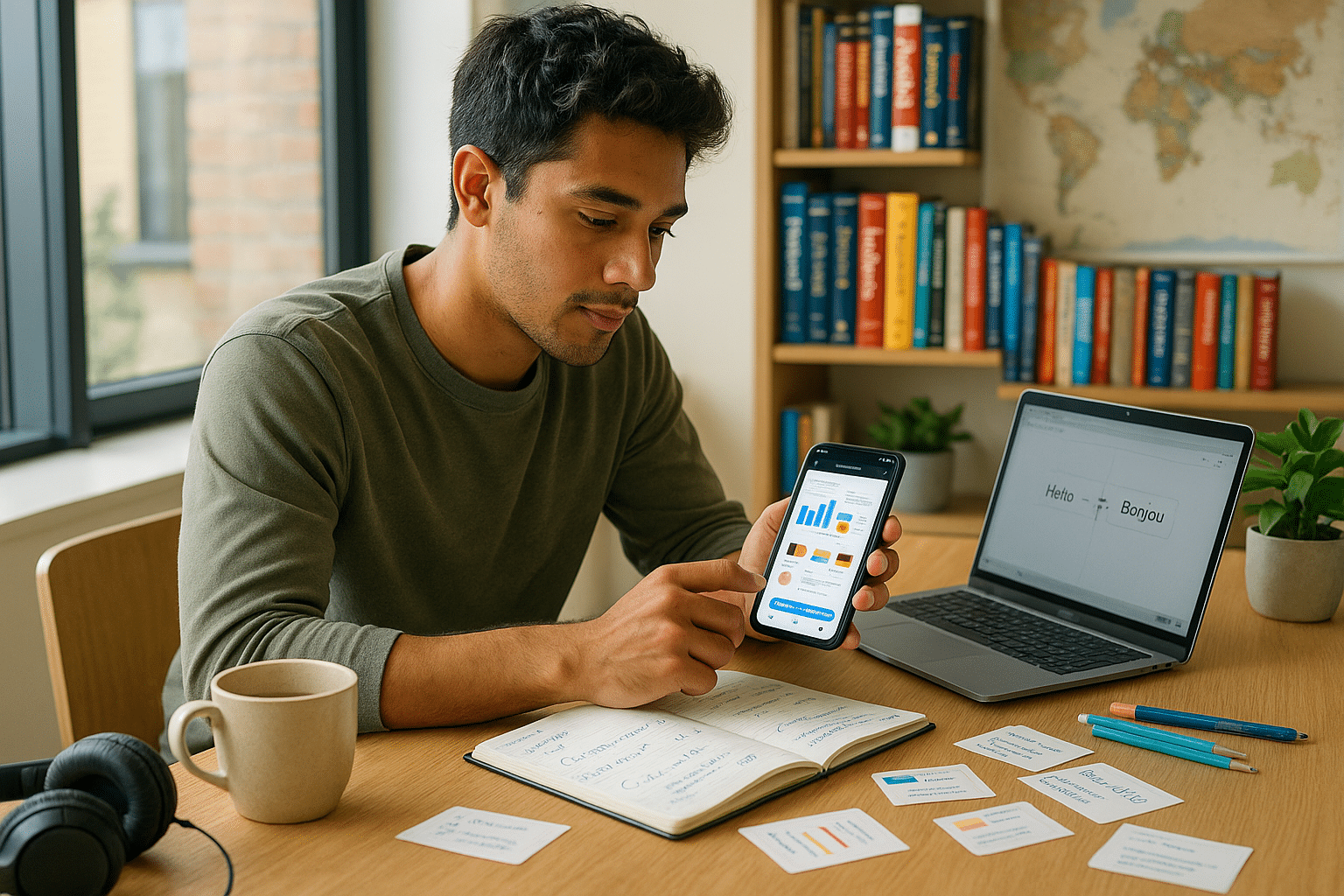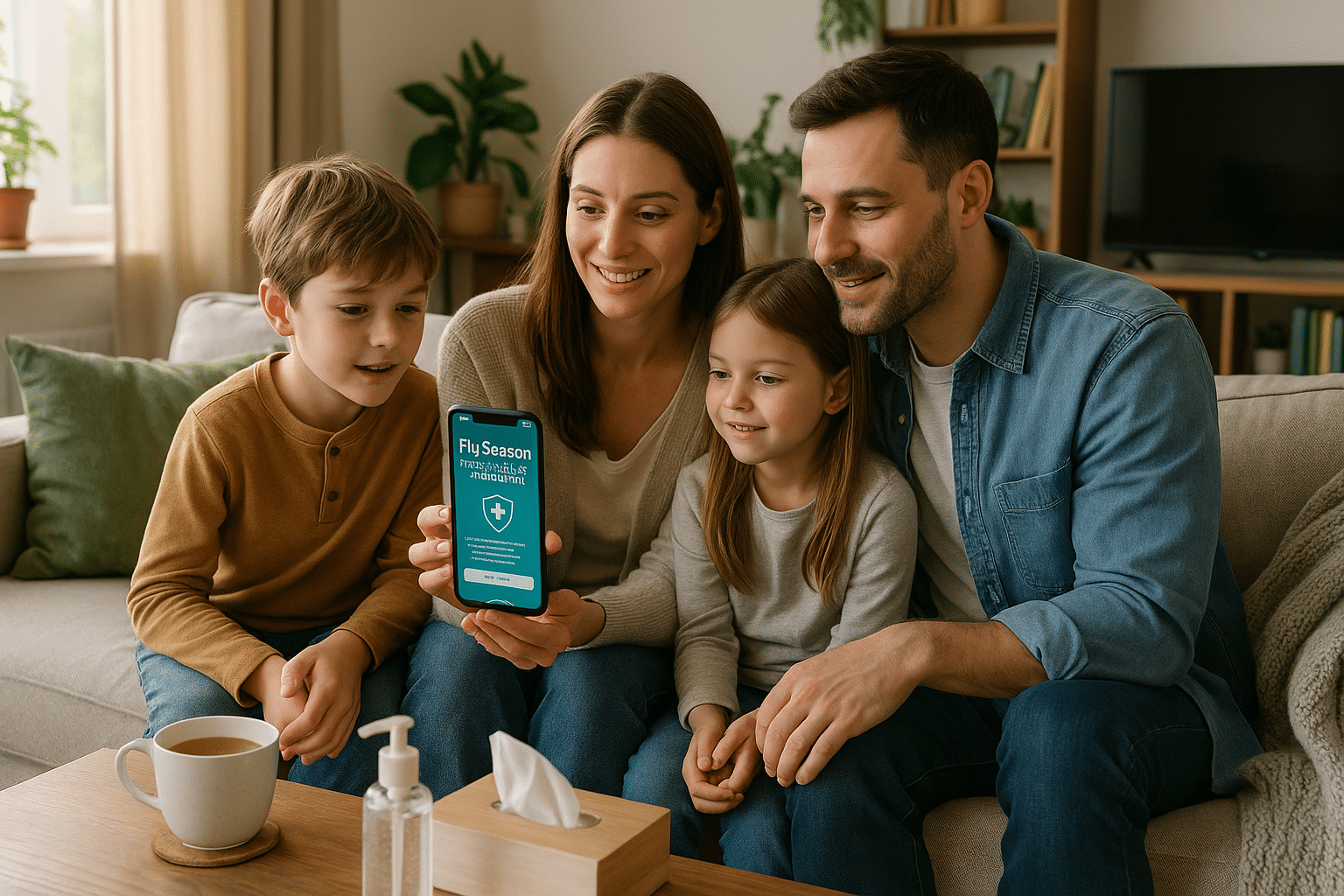Anúncios
Learning a new language has never been easier, and thanks to modern technology, the process is now faster, more accessible, and even fun. 🌍 Whether you're dreaming of fluent conversations, boosting your career, or immersing yourself in a new culture, the right tools can make all the difference.
In this guide, discover the best language learning apps tailored for fast and effective progress. From mastering pronunciation to expanding your vocabulary, these tools combine cutting-edge techniques like AI, gamification, and personalized lessons to keep you motivated and consistent. 📱✨
Anúncios
But which app truly stands out for your unique needs? Dive into the pros, cons, and standout features of the top platforms that promise real results. No more guesswork—unlock the secrets to learning any language with ease and confidence!
Unlocking the Power of Language Learning Apps: A Deep Dive
The Rise of Language Learning Apps in a Digital Era 🌐
In the last decade, language learning apps have revolutionized the way people acquire new languages. With the growing accessibility of smartphones and advancements in artificial intelligence, these apps have become indispensable tools for learners of all levels. But what makes them so effective? And why have they become so popular?
Anúncios
Language apps capitalize on three key elements: convenience, interactivity, and personalization. Unlike traditional classroom-based learning, apps provide access to lessons anytime and anywhere.
See Also:
- Unleash Potential with Archetypes App
- Smooth Rides: Top Traffic App
- Unleash Faith: Best Bible Apps
- Accelerate Success with Our App
- GTA 5 Thrills On-The-Go
Furthermore, the integration of gamification techniques, like earning points or unlocking achievements, keeps learners motivated and engaged. Many apps also use AI to create tailored learning paths based on the user’s progress, ensuring that lessons are neither too easy nor overly challenging.
Statistics back up the growing reliance on these tools. A 2022 study revealed that more than 1.5 billion people worldwide have used a language learning app, with an impressive satisfaction rate of 87%. This surge in popularity is particularly evident among busy professionals and students, who appreciate the flexibility these platforms offer. 📈
However, not all apps are created equal. Some excel in conversational skills, while others focus on grammar or vocabulary. Understanding the core features of each app is crucial for making the right choice.
Key Features to Look for in a Language App 🔑
Interactivity and Gamification
One of the hallmarks of a successful language app is its ability to engage users through interactive and gamified features. These elements transform the learning process into an enjoyable experience, making users more likely to stick with it.
For instance, apps like Duolingo and Babbel incorporate quizzes, daily challenges, and streaks to encourage consistent practice. Gamification works because it taps into the human desire for achievement and rewards. When learners earn points, level up, or receive badges, they feel a sense of accomplishment that motivates them to continue.
But interactivity goes beyond games. High-quality apps also offer features like voice recognition for pronunciation practice and live interaction with native speakers. This hands-on approach bridges the gap between passive learning and active application, which is critical for mastering a language.
Personalized Learning Paths
Personalization is another essential feature to consider when selecting a language app. Every learner is unique, with specific strengths, weaknesses, and goals. An effective app adapts to these individual needs, ensuring that users remain both challenged and supported throughout their journey.
For example, apps like Rosetta Stone use AI algorithms to track user progress and recommend customized lessons. By identifying patterns in mistakes and gaps in knowledge, these platforms can deliver targeted exercises that address weak areas.
Additionally, many apps allow users to set specific goals, such as “learn 50 new words this week” or “achieve conversational fluency in 3 months.”
This level of personalization not only enhances the learning experience but also significantly improves outcomes. Studies show that learners who use tailored content are 45% more likely to retain new information compared to those using generic materials.
Top Language Learning Apps and What Sets Them Apart 🌟
Duolingo: Fun and Accessible for Beginners
Duolingo has become a household name in language learning, and for good reason. Known for its playful interface and gamified approach, this app is perfect for beginners looking to build a foundation in a new language. Lessons are bite-sized, making it easy to fit learning into even the busiest schedules.
Key features include:
- Gamification: Earn points, maintain streaks, and compete on leaderboards.
- Variety of Languages: Over 40 languages available, including lesser-known options like Navajo and Klingon.
- Interactive Exercises: Focus on vocabulary, grammar, and pronunciation.
However, while Duolingo is excellent for beginners, it may not be ideal for advanced learners seeking deeper linguistic insights. Its simplicity is both its strength and its limitation.
Babbel: Tailored for Practical Conversations
Babbel is often praised for its emphasis on conversational language skills. Unlike other apps that focus heavily on vocabulary drills, Babbel prioritizes real-life communication, making it a great choice for travelers and professionals.
Key features include:
- Real-Life Scenarios: Lessons are based on everyday situations like ordering food or attending a meeting.
- Grammar Tips: Clear explanations integrated into lessons for better understanding.
- Offline Mode: Learn on the go, even without internet access.
What sets Babbel apart is its structured approach. Each course is designed by linguistic experts and progresses logically, building on previous lessons. This ensures a smooth learning curve and solid language foundations.
Comparing the Best Apps: A Quick Overview 📊
| App | Best For | Languages Offered | Notable Features |
|---|---|---|---|
| Duolingo | Beginners | 40+ | Gamification, Streak Rewards |
| Babbel | Practical Conversations | 14 | Real-Life Scenarios, Offline Mode |
| Rosetta Stone | Immersive Learning | 25+ | Speech Recognition, Dynamic Immersion |
| Busuu | Grammar and Community Interaction | 12 | Grammar Review, Live Chats with Natives |
How to Maximize Your Language Learning Experience 📚
Consistency is Key
One of the most important factors in successful language learning is consistency. Studies show that short, frequent study sessions are more effective than infrequent, long sessions. Apps are designed to support this, often sending reminders or offering daily challenges to encourage regular practice.
To stay consistent:
- Set aside a specific time each day for language learning.
- Use app features like streaks to stay motivated.
- Pair app use with other resources, such as podcasts or books, for variety.
Combine Digital Learning with Real-World Practice 🌍
While apps are powerful tools, they should not replace real-world language practice. Speaking with native speakers, whether through virtual exchanges or in-person conversations, is crucial for building confidence and fluency.
Some ways to integrate real-world practice include:
- Joining online language exchange platforms like Tandem or HelloTalk.
- Attending local meetups for language learners.
- Traveling to countries where the language is spoken, if possible.
Combining digital tools with immersive experiences creates a holistic learning approach, ensuring both theoretical knowledge and practical application.

Master Any Language with Ease 🌟
In conclusion, language learning apps have truly transformed the way we approach acquiring new languages. By blending convenience, personalization, and interactivity, these tools offer a unique and effective learning experience that caters to a wide range of needs.
Whether you're a busy professional seeking to improve conversational skills, a student aiming to ace your language exam, or simply someone exploring a new culture, there’s an app out there for you. 🌍
As highlighted, apps like Duolingo, Babbel, and Rosetta Stone each bring something distinct to the table. From gamified lessons and real-life scenarios to immersive techniques, they address different aspects of language learning, ensuring that users remain engaged and motivated.
However, to truly maximize your progress, it’s essential to go beyond the digital realm. Pairing app-based learning with real-world practice, such as speaking with native speakers or participating in language meetups, can greatly enhance fluency and confidence.
Remember, consistency is the foundation of success. Set daily goals, embrace challenges, and celebrate small victories along the way. With the right combination of tools and dedication, mastering any language becomes an achievable goal. So why wait? Start your language learning journey today, and unlock a world of opportunities! 🚀




